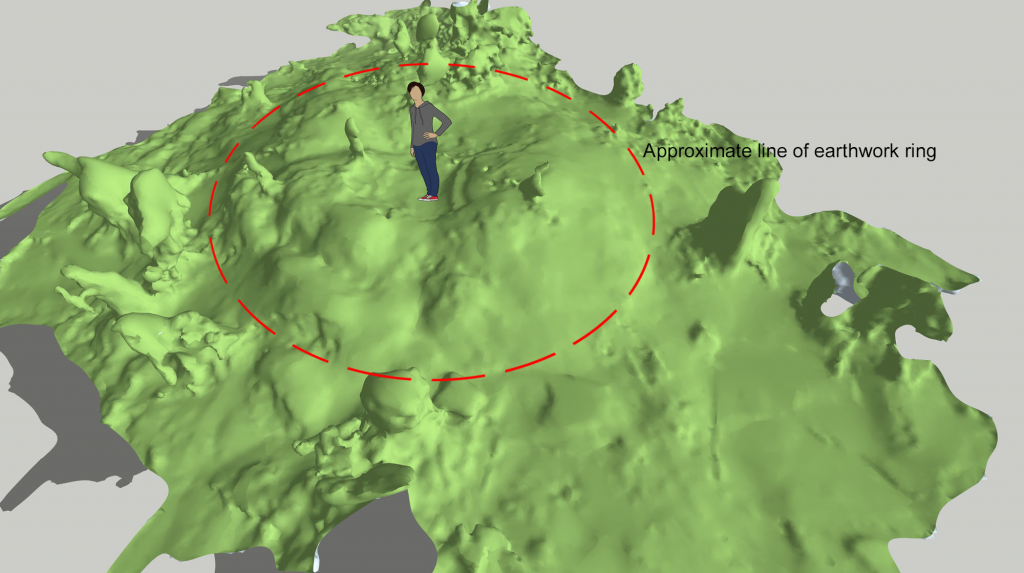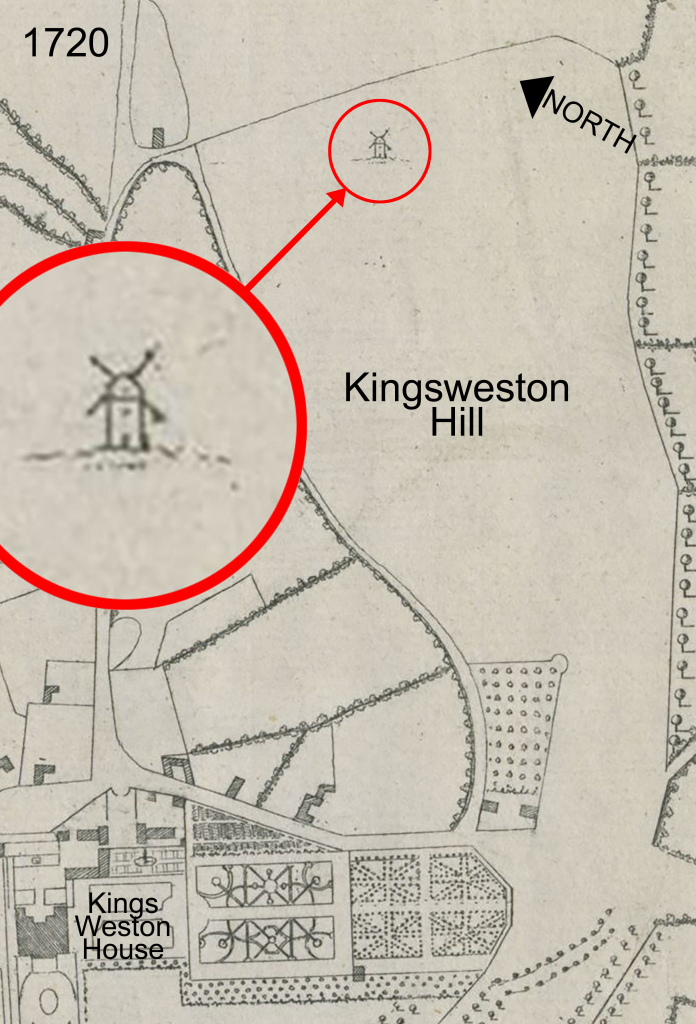One historic feature of the estate remains shrouded in mystery: the lost windmill on Kingsweston Hill. By chance we rediscovered the remains on a recent walk across Kingsweston Hill, and they remain as a pronounced landscape feature. It’s often been mistaken for a burial mound, of which there are several across the hill, and occasionally as the remains of a Roman signal station or lighthouse.

Already, by 1772, it was described as an ‘old’ windmill and is shown on the estate plan of that date standing just within the boundary of the Tithing of Kings Weston. The earliest reference to it appears to be from an earlier such plan from 1720 where it’s shown, perhaps emblematically, as a tower with a rounded top and four arms for sails, but, surely an “old” building would have stood for more than 50 years? Had it already fallen into disrepair by 1772? The origins of the building are unclear.
The remains surviving on the hill are now hidden somewhat by self-seeded trees that have scattered themselves across the site, but close inspection is worthwhile. There remains a significant mound with a hollow dip in the centre. Loose stonework sits half-buried around the remains and covered in ivy. The ring is about 7m in diameter and 1m in height, but the outline of the original building is likely to have been blurred by the walls falling outwards giving it a broader outline. It was clearly a circular masonry tower when first built.
It occupied a prominent and fittingly exposed location on the hill until trees grew up encroaching onto the open downland in the Nineteenth century. The wind coming up the Severn must have proven a regular if occasionally violent source of power. The mill had certainly fallen out of use by 1768 when a French Colonel was sent to spy on British interests. He recorded that the tower of the old mill was in use as a lookout in times of war, indeed, it was drafted into use for such in 1804 when a flagstaff was erected on it for signalling during the Napoleonic Wars.

Several Georgian drawings and prints confirm that the tower remained to a substantial height and remained a significant feature, complementing the silhouette of Blaise Castle folly as an eyecatcher on the horizon. Perhaps its strategic military use ensured it was maintained at least as long as the country was threatened, but by about 1820 it vanishes. Its fate is as unclear as its origin; perhaps it was dismantled by the 22nd Lord de Clifford, robbed for its building material, or dismantled as a handy source of stone to burn in the nearby limekilns. Whatever happened to it, the surviving earthworks present an intriguing opportunity to excavate it and discover its secrets!
Explore the site using the 3D scan here



